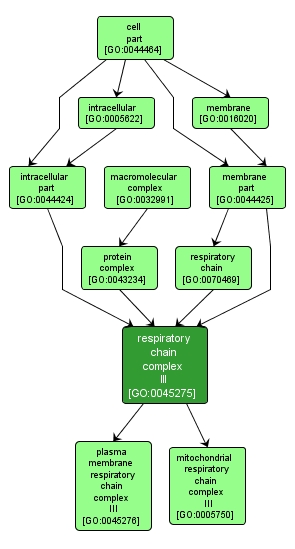| Desc: |
A protein complex that transfers electrons from ubiquinol to cytochrome c and translocates two protons across a membrane. The complex contains a core structure of three catalytic subunits: cytochrome b, the Rieske iron sulfur protein (ISP), and cytochrome c1, which are arranged in an integral membrane-bound dimeric complex; additional subunits are present, and vary among different species. |














